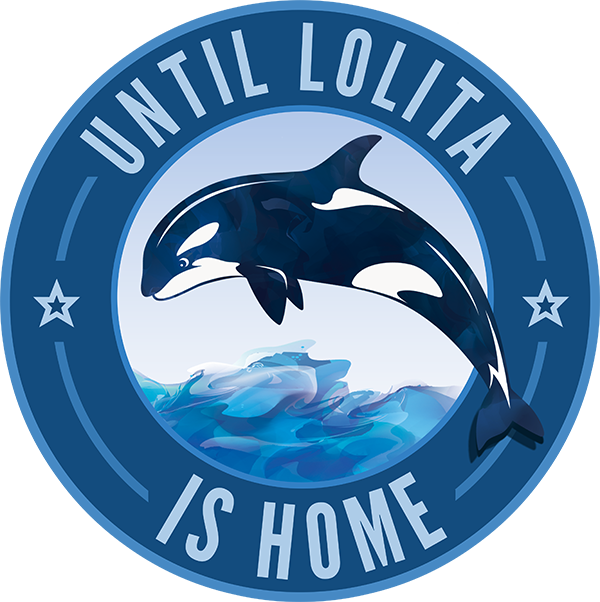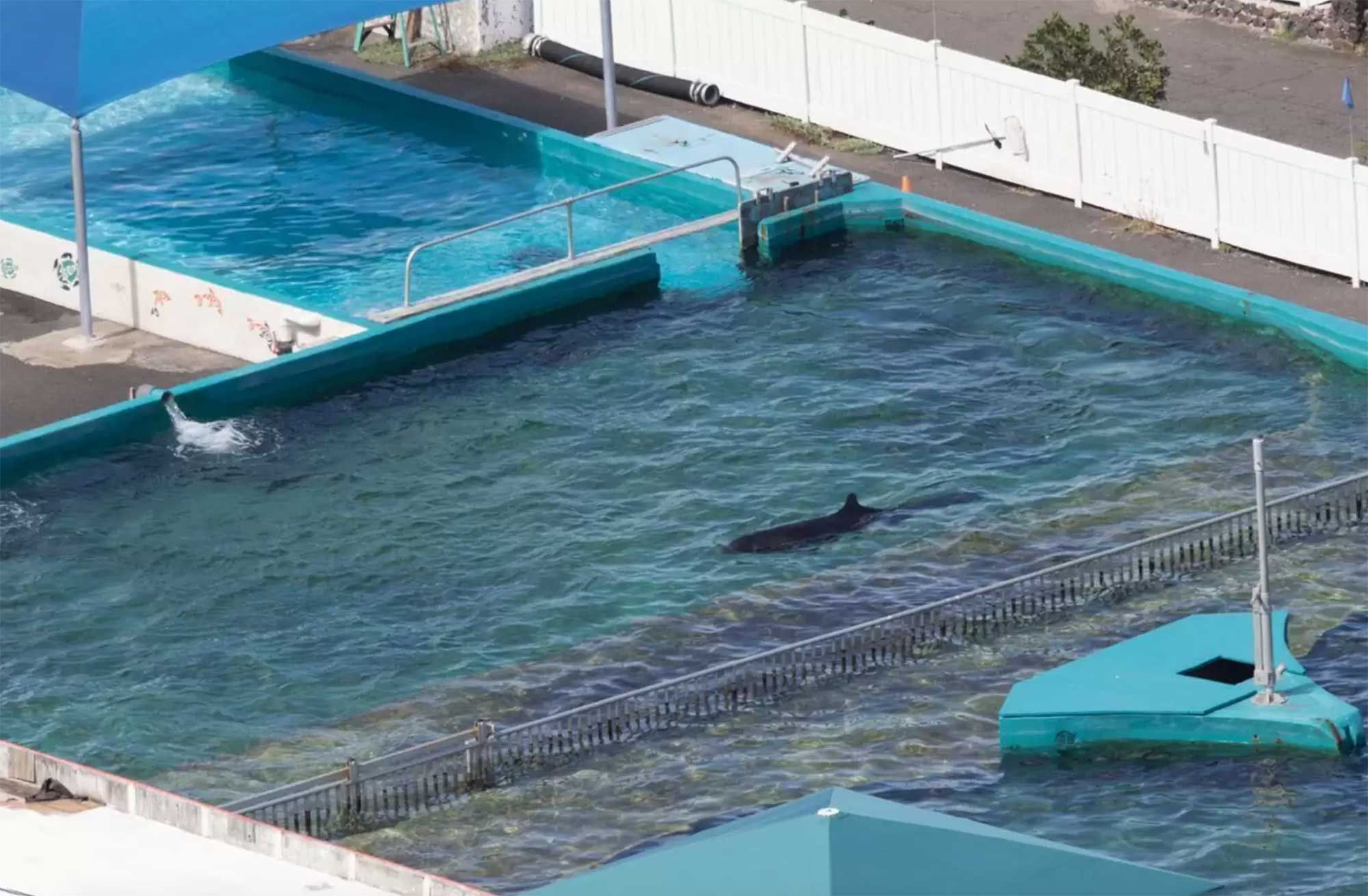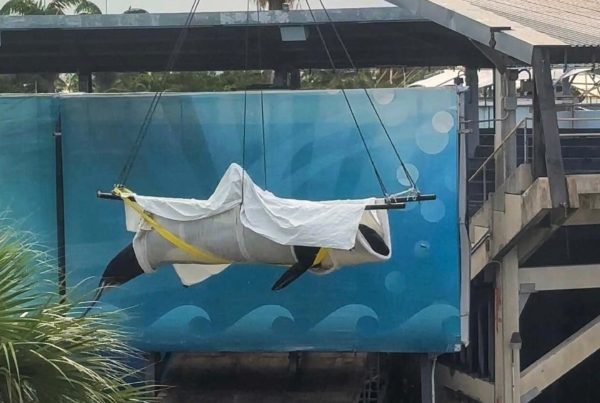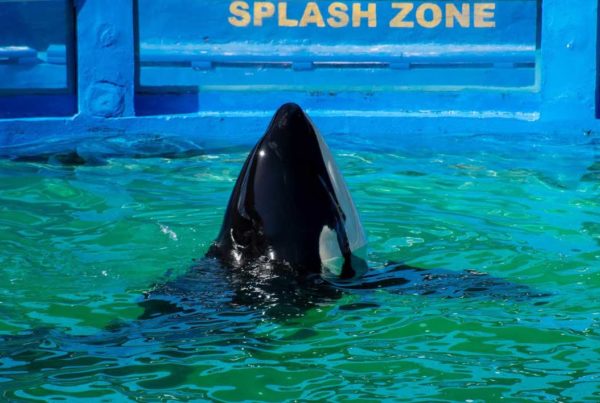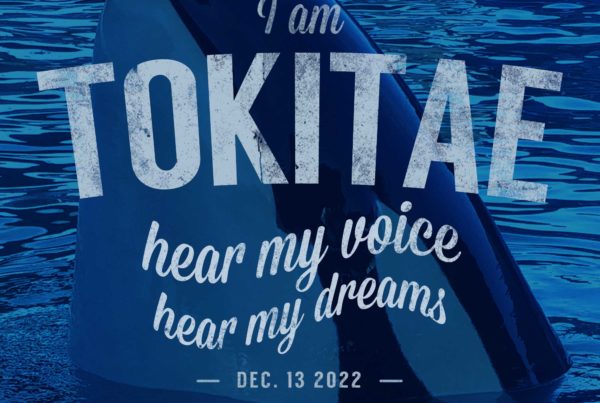The captivity of a 49-year-old orca in the smallest tank in North America inspired protests at 10 parks across the country Saturday, with two dozen activists picketing outside Sea Life Park on Oahu.
While Lolita is held at the Miami Seaquarium, park owner Palace Entertainment boasts 22 locations on its website.
The activist group Shut Down Palace hosted protests Saturday at 10 locations including Palace’s only park on Hawaii. The park did not return a request for comment relayed through its publicists at Becker Communications.
Shut Down Palace notes that the Miami Seaquarium bought Lolita shortly after fisherman culled her from her mother in the 1970 Penn Cove roundup off Puget Sound in Washington. Five other whales drowned in the capture, which involved airplanes, speedboats, ropes, nets and bombs, Shut Down Palace says.
Miami Seaquarium already had an orca named Hugo, but whale activists say Hugo killed himself on March 4, 1980, by repeatedly smashing his head against the wall of the tank he shared with Lolita.
The tank measured 60-by-80-foot by 20 feet deep, while Lolita herself is 20 feet long, according to Shut Down Palace’s website.
In addition to depriving Lolita of the ability to dive, as she would in the wild, the group says Palace has kept Lolita alone for decades in the smallest orca tank in North America.
Lolita’s small tank size, lack of protection from the intense Florida sun, and isolation from others of her species are all issues at the heart of various lawsuits the Miami Seaquarium faces under the Animal Welfare Act.
On Oahu, meanwhile, Animal Rights Hawaii activists voiced their opposition to the captivity of Kina, a false killer whale they say was captured off Japan’s Iki Island in 1987. False killer whales, or pseudorcas, are actually a species of dolphin, but they share physical similarities with orcas, which are also known as killer whales.
Both species feed on other marine mammals, like dolphins, as well as deepwater fish like yellowfin tuna and mahi mahi.
Sea Life Park announced its acquisition of 40-year-old Kina last year.
Her supporters at the protest Saturday said the park has been keeping Kina and two other cetaceans in quarantine, without a permit, in small concrete tanks.
Video from a drone flight over Kina’s tank revealed she was “logging,” or lying on the surface of the water with her head resting on the tank’s edge, which is indicative of severe depression, Animal Rights Hawaii founder and president Catherine Goeggel said.
“Sea life Park should lose its accreditation,” Goeggel said.
Goeggel’s group notes that the aquarium accrediting body, the Alliance of Mammal Parks and Aquariums, “strongly condemns” Japanese drive fisheries, one of which was responsible for Kina’s capture.
“Dolphin Quest lies, Sea Life Park lies,” said local event organizer and Animal Rights Hawaii member Alexis Thomas, referring to the park and private group that charge hundreds of dollars for dolphin “experiences” — personal dolphin encounters in the water.
One protester summed up such packages as “dolphin lap dances.”
In addition to Sea Life Park, Animal Rights Hawaii seeks to call attention to Ko’olina Resort’s plans to open a marine park called Atlantis on the west side of O’ahu.
Animal Rights Hawaii says “trainer error” caused the deaths of a dolphin and sea lion at Sea Life Park in 2015, when an inexperienced trainer incorrectly inserted a feeding tube into the animals. The group says the dolphin’s death has yet to be reported.
Other literature from Animal Rights Hawaii says Sea Life Park has recorded 124 dolphin deaths in its 52 years of operation. Causes purportedly include trainer error, drowning, suffocation, jumping out of their tank, trauma, heart attack, pneumonia and parasites.
Though the Becker Communications spokesman said the park “disputes” that number, another nonprofit said the number is higher.
Citing its Freedom of Information Act requests with the U.S. government’s National Inventory of Marine Mammals, the group Ceta Base reports that 157 cetaceans have died at Sea Life Park since the 1960s.
In a series of papers on Dolphin Intelligence and Captivity Issues, Hawaii-based scientist and animal rights activist Ken LeVasseur says “human perception” and “experimental design” alone limit the advanced mental abilities of marine mammals.
Cognitive ethology, which would study animal intelligence in the wild, offers an alternative to published Navy studies which vastly underestimate dolphin’s mental abilities and are used as cover for the Navy’s secretive experiments, which LeVasseur surmises may include use of a dolphin communication system first devised by Dwight Batteau in the mid-1960s.
LeVasseur says Batteau publicized his work with the Navy but was found dead in the water after a morning swim on October 26, 1967 — the day two dolphins in his study were to be removed from Coconut Island to the Oceanic Institute, at Sea Life Park, thus “cut[ting] short what was the first established interspecies communication demonstration.”
“With cognitive ethology,” LeVasseur writes, “we now have a scientific discipline that can explore the mind of a nonhuman animal with a brain the size of or larger than man’s. But, this can be done only if we can find a way to communicate information to and receive information from such a suspected consciousness.”
In 1975, LeVasseur moved into Louis Herman’s University of Hawaii Marine Mammal Laboratory at Kewalo Basin where he lived with two dolphins, Puka and Kea.
The program lost its funding after two years, however, and lab conditions deteriorated. On May 29, 1977, LeVasseur and friend and colleague Steve Sipman released Puka and Kea into Yokahama Bay in Hawaii. The two faced independent trials and were convicted and given community service.
Herman later acquired two new dolphins and continued his work. He subsequently founded The Dolphin Institute where he continues his studies of dolphins and whales.
While transitioning animals into sea pens would certainly be an improvement over their current conditions, Alexis Thomas points to India’s declaration of dolphins as “nonhuman persons” with a “right to be left alone,” as a model for the future.
– Courthouse News Service
